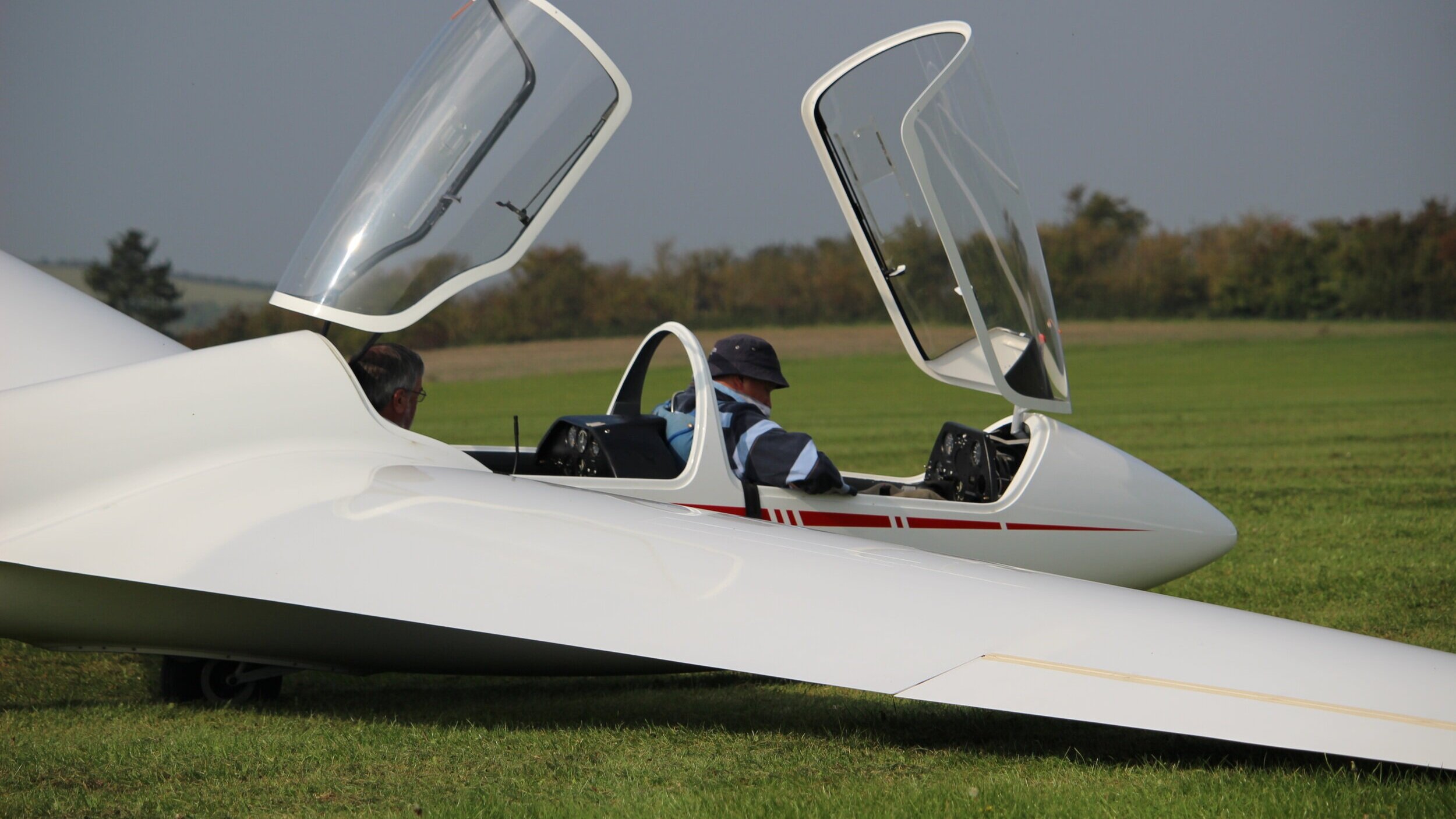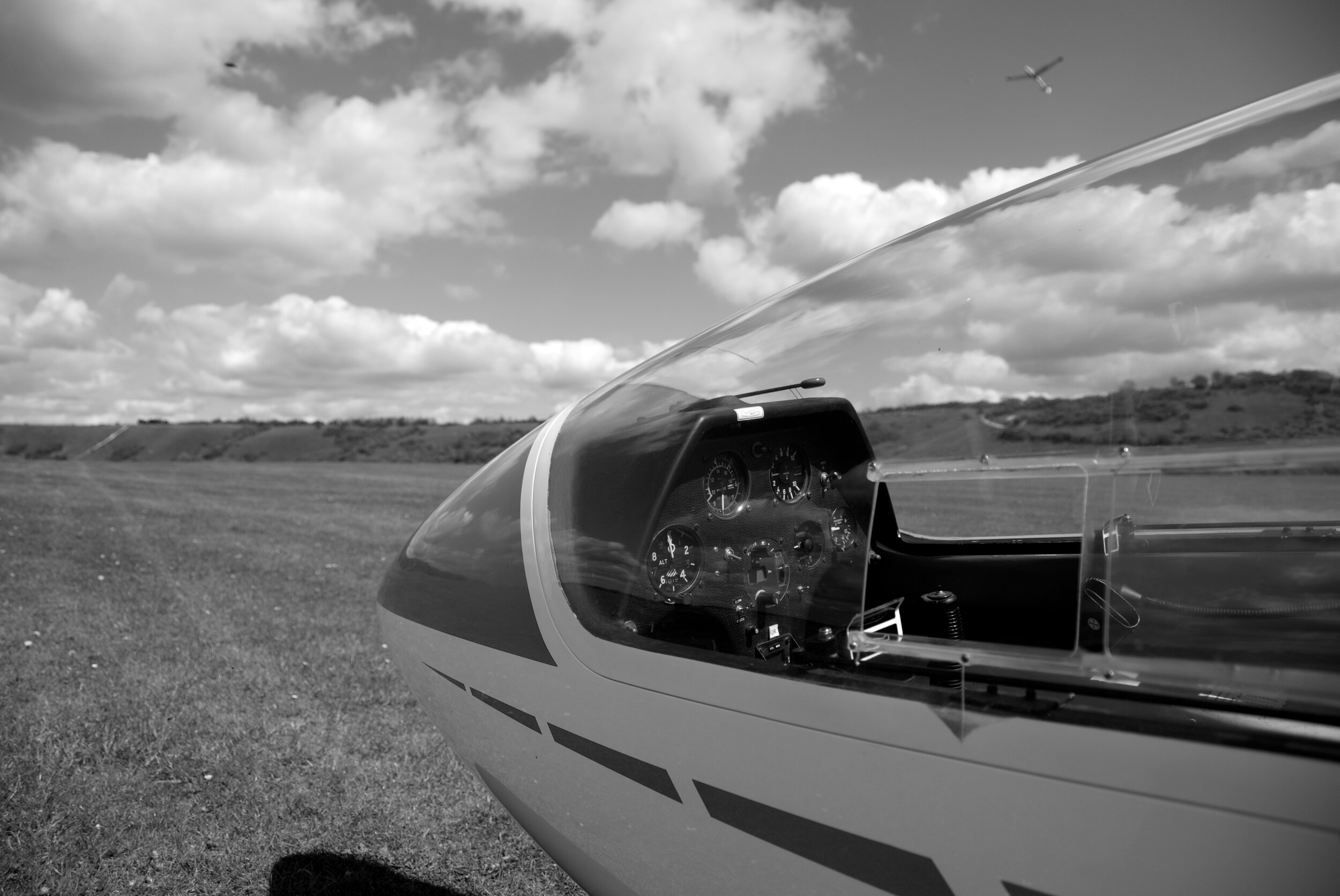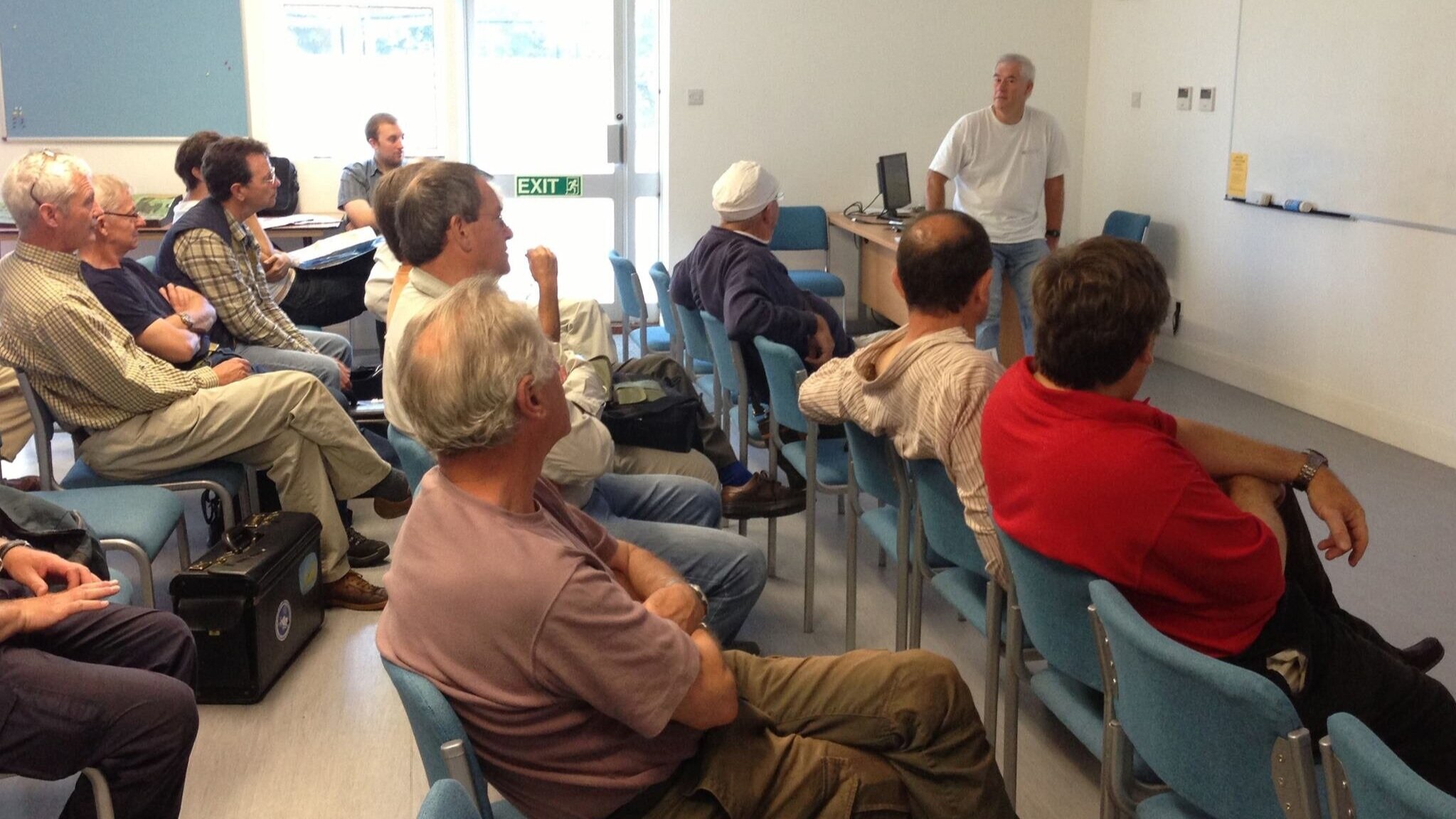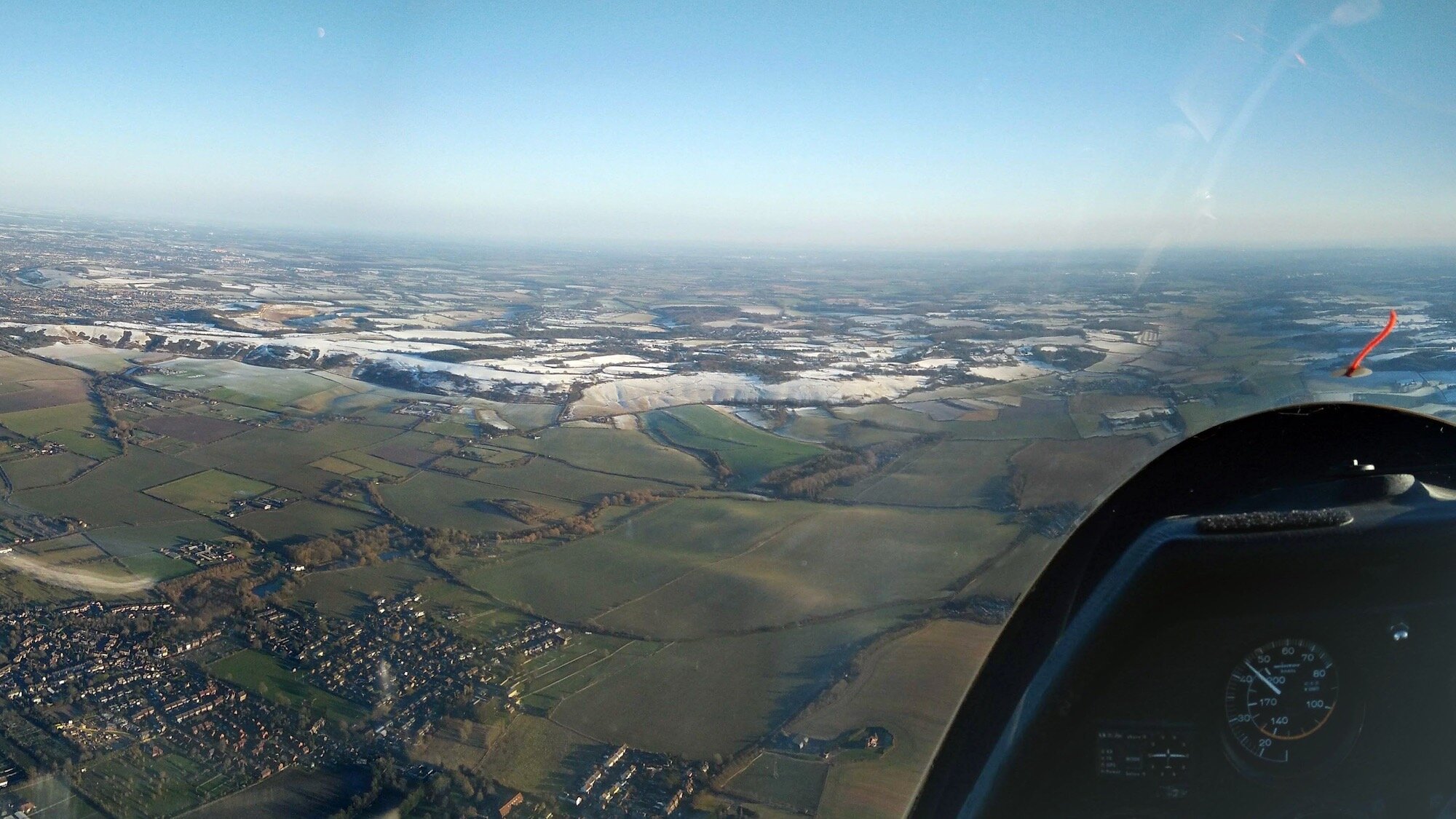
Training with Us
When you have completed your first glider flight or short course, we hope you will be hooked! Different people have different time availability, learning rates and budgets, so we offer various ways to start your Membership. You can learn to fly at your own speed moving slowly or quickly towards your first solo flight – and beyond.
How it works
Join us for three months and really get to know our club. Includes £200 credit to your flying account.
Whatever your gliding background or situation, the best way to decide which route is best for you, is to discuss your personal outlook with us – our CFI , instructors, and indeed every member you meet, will be happy to assist.
On weekdays members arrive and join the ‘arrivals list’ – the daily queue for training. Once you have had your training session you can put your name on the list again. Normally one commits at least half a day – either arrive early, have breakfast and help get the kit out, then fly; or arrive around lunchtime and stay to the end of the day.
Remember, the first thing to do every time you arrive at the club, is to find the flying list, and put your name on it! Obviously if there are more people on the waiting list you may have a longer wait. It also depends on the weather conditions and instructor availability – we aim to ensure at least one for club instruction every day. You won’t get bored – the time waiting is usefully spent learning about ground operations, in briefings or helping out as crew. At weekends you can pre-book an instruction slot on our on-line system or via the office.
You can continue your training by coming along whenever and as often as you like – but if you can attend regularly – say at least twice a month – then your development is likely to be more steady, with less revision of past lessons. If you have more time available you might turn up more frequently – every day if you like - or decide to book an intensive course. These can be tailored to fit an individual members’ needs, in terms of timing and/or syllabus. For many members, particularly those learning quickly (often younger members!) or those with some prior experience the basic club instruction route is often the best choice. It can also work well for those who have less predictable availability.

The Training Programme
The training programme follows the BGA Gliding syllabus and it prepares you initially for the BGA Gliding Certificate (first solo flight).
The key sections of the syllabus are:
Lookout, Effects of Controls, Use of Trim, The Straight Glide, Turning, Airbrakes (and/or Spoilers), Approach Control, Landing, Circuit Planning, Launching, Stalling, spinning & Spiral Dive, Emergencies
Each section has a number of exercises and stages and whilst some have to be conducted in order, others can be done concurrently. There is a good deal of flexibility and the schedule can be adapted to fit in with your progress and other factors such as the weather.
Your first solo is an important and very memorable achievement, but it just marks the beginning of the next stage of training.
To get to your BGA Bronze qualification, you have to complete a number of solo flights and a minimum of 10hrs flight time. There are in-flight skills tests and a theoretical course and exam, covering Air Law and ATC Procedures, Human Performance, Meteorology, Communications, Principles of Flight, Operational Procedures, Flight Performance and Planning, Aircraft General Knowledge, Airframe, Systems and Emergency Equipment as well as Navigation.
Then it’s time to move on to the Cross-Country Endorsement, which involves a Navigation and Field Landing exercises. At this point you will qualify for a Sailplane Pilots Licence (SPL).
You are a fully independent, qualified glider pilot, free to fly whenever you like! You may decide to take up aerobatics, flying vintage gliders, or, like many of us, develop your cross-country skills.
You can now start to work on the FAI (Fédération Aéronautique Internationale) Badges, which are internationally recognised achievements in gliding. In very simple terms:
Silver – this is broken into 3 components:
Duration = A flight of over 5 hours
Distance = A cross country flight that takes you at least 50km away from your launch airfield in a straight line
Height Gain = A height gain of 1000m (about 3300ft) is achieved a flight involving a 50km cross-country distance
Gold –
Distance = A cross country flight of at least 300km
Height Gain = AHeight gain of 3000m (about 9900ft)
Diamond –
Distance = A cross country flight of at least 500km
Height Gain = 5000m (about 16,400ft)
Goal = A cross country task that is an equilateral triangle or Out & Return distance of 300km
Beyond that there are distance diploma’s which are awarded for flights covering 750km and increase in 250km increments. So far, 1500km has been achieved in the UK and the world record is over 3000km!

Progression
Flight training starts with ‘Lookout’, and basic use of controls: you will be able to fly the glider in your first flight, although it takes a while to achieve good coordination. You will move on to using the airbrakes, approach control and landing, as well as launching the glider. There are various advanced exercises and judgement skills to refine before you are ready for your first solo flight. You will be able to monitor progress with a personal logbook and progress assessment card. As well as the flying exercises there are classroom sessions and each lesson will include pre-and post-flight briefings.
Going solo is a wonderful achievement, but it is just one step in preparing you to be an independent pilot able to enjoy the freedom of the air! Before qualifying for your licence you will have achieved a certain amount of solo flight, passed a ‘Progress Assessment’ test and gained your BGA ‘Bronze’ qualification. This involves a further flight test and a ground exam covering subjects such as meteorology, navigation, and use of radio.
Becoming a licensed glider pilot is really just the beginning - for many of us it develops into a lifelong commitment. How far you go is up to you – at LGC we can help you enjoy our sport to the full, perhaps excel at cross-country or aerobatics, get involved in competitions, help restore vintage gliders, or maybe become an instructor and pass on your passion to others.
Learning to fly does require a serious time commitment. It is important to fly regularly, to make steady progress through the programme, and to maintain ‘currency’. You can expect to be taking control of the glider in your first flight, and you should be doing most of the flying after a few more sessions. There are numerous ‘milestones’ along the way to becoming a licensed pilot, with your first solo flight being just one.
Different people learn at different rates, and the more often you fly the quicker your progress, with less time spent revisiting old ground. You can set your own pace - those who can fly every week can reasonably expect to become an independent solo pilot in about 12 months. With intensive training and good progress it can be a matter of weeks.

Post-solo and Advanced training
Once you have achieved your Bronze and Cross-Country endorsement you will be an independent, qualified pilot, free to fly whenever you like! You may decide to take up aerobatics, or flying vintage gliders, or, like many of us, develop your cross-country skills. Some like to explore the excitement of mountain flying and the wonder of high altitude wave flight.
At LGC we have the facilities and instructing staff to help you develop your skills to the very highest levels. We have produced several national champions in both cross-country and aerobatics.
In many respects every day is a training day at LGC. In the ‘season’, on any soarable day we will be setting a number of cross-country tasks for pilots and gliders of different abilities, stretching the skills of the top pilots, and encouraging those at the start of their x/c career, perhaps with an informal ‘lead and follow’ flight. In the winter months we have a series of lectures covering the Bronze syllabus, RadioTelephonycourses, and informal seminars covering a range of topics.
If aerobatics is your thing, once qualified you can fly our Pilatus B4. Using our K21 fleet our aerobatics instructors can help you achieve the aerobatics ratings. Then you can enjoy the sheer exhalation of flying upside down, or high energy manoeuvres, or even enter competitions. Our aerobatic group can normally be found at weekends and in the summer, on Wednesday evenings.
Every year we organise expeditions to other gliding sites, offering conditions very different from those at Dunstable. Our favourite destinations include Cerdanya (Pyrenees), Talgarth, Llanbedr & Denbigh. Here you can learn about flying in mountain regions, and explore the wonders of high altitude wave flying.
As well as the daily routine, the club offers a number of more formal, organised courses, competitions and opportunities to develop your skills.
Instructors
Basic Instructors
Basic Instructors teach the first parts – providing an excellent introduction to flying. If you come on a trial lesson you will normally fly with a Basic Instructor.
Assistant & Full Instructors
Once you have advanced past the level of a Basic Instructor you continue your learning with Assistant and Full instructors. Each has learnt how to teach more advanced elements of flying – some even specialise in teaching cross country soaring or Aerobatics.
Motor Glider Instructors
The London Gliding Club also has instructors who can teach you how to fly motor gliders – taking you all the way to an NPPL!

